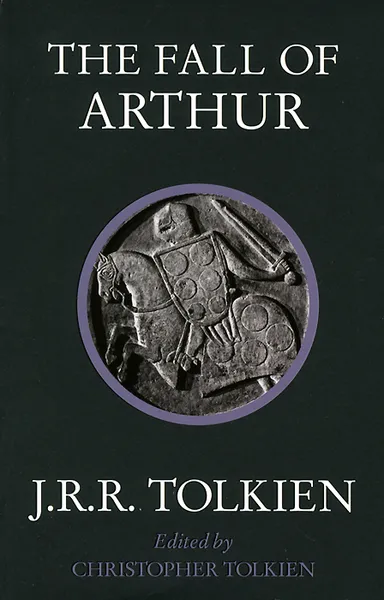The Fall of Arthur
Автор: J. R. R. Tolkien
2013
Редактор: Толкиен Кристофер
Переплёт: Мягкая обложка, 240 страниц
ISBN: 978-0-00-755730-1
Авторский сборник
📘 The Fall of Arthur, the only venture by J.R.R.Tolkien into the legends of Arthur King of Britain, may well be regarded as his finest and most skilful achievement in the poetic use of the Old English alliterative metre. Here he brought to his transforming perceptions of the old narratives a pervasive sense of the grave and fateful nature of all that is told: of Arthur's expedition overseas into distant heathen lands, of Guinevere's flight from Camelot, of the great sea-battle on Arthur's return to Britain, in the portrait of the traitor Mordred, in the tormented doubts of Lancelot in his French castle.
Tolkien began The Fall of Arthur in the early 1930s, but abandoned it, probably in 1937, the year of the publication of The Hohbit and the first stirrings of The Lord of the Rings. To bring this work finally into print, Christopher Tolkien has assembled the many manuscript pages associated with it: a great quantity of drafting and experimentation in verse, in which the strange evolution of the poem's structure is revealed, together with narrative synopses and significant if tantalising notes. In these latter can be discerned associations of the Arthurian conclusion with The Silmarillion, and the bitter ending of the love of Lancelot and Guinevere, which was never written.
Tolkien began The Fall of Arthur in the early 1930s, but abandoned it, probably in 1937, the year of the publication of The Hohbit and the first stirrings of The Lord of the Rings. To bring this work finally into print, Christopher Tolkien has assembled the many manuscript pages associated with it: a great quantity of drafting and experimentation in verse, in which the strange evolution of the poem's structure is revealed, together with narrative synopses and significant if tantalising notes. In these latter can be discerned associations of the Arthurian conclusion with The Silmarillion, and the bitter ending of the love of Lancelot and Guinevere, which was never written.
Мнения

